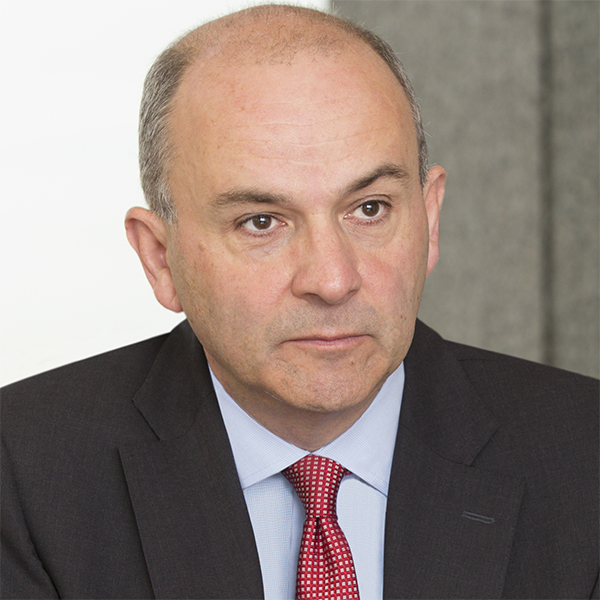World Markets Review
Markets & Economy
The wisdom of crowds can be powerful. But in times of heightened uncertainty, it can be helpful to understand potential risks.
At the moment, markets appear to be crystallizing around a hopeful outlook for 2023. Asset prices suggest inflation will begin to subside quickly, the Fed will become less hawkish and global growth won’t be much weaker than it is this year.
However, monetary policy is fluid, geopolitical uncertainty is high and strong labor markets are being offset by weakness in housing and other areas. Together, this allows for a range of possible outcomes.
There are four contrarian scenarios in which our economists think current market consensus, as reflected in asset prices, may not be the most probable outcome. Jared Franz says the Fed will keep rates higher for longer, yet when the economy recovers, it will be stronger than prior rebounds. Meanwhile, Robert Lind argues that European policymakers will likely run looser fiscal policies and tolerate higher inflation. Stephen Green says the Chinese consumer will take time to rebound, and currency analyst Jens Søndergaard warns it's too early to call for the end of the dollar's bull run.
The views are those of the economist stated, and the views of individual portfolio managers and analysts may differ.
1. The Fed will keep rates higher for longer
Jared Franz, U.S. economist
Current inflation dynamics are going to keep the heat on the U.S. Federal Reserve to raise rates more if it’s really serious about not repeating the mistakes of the 1960s and 1970s. Beyond the expected 50 basis point rate hike at the Fed’s December policy meeting, the market doesn’t think the central bank will ultimately go beyond 5%. Plus, the consensus view on U.S. gross domestic product (GDP), although more tempered of late, still calls for something close to a soft landing next year. In contrast, I believe the U.S. economy is likely to slip into a mild recession, contracting by about 2%.
While the consumer price index — the main inflation gauge in the United States — has probably peaked, it’s not falling back to 2% anytime soon. Price pressures have migrated from the goods sector to services, where inflation tends to be structurally stickier. This means it will take time and effort to get those prices to cool down.
In addition, the labor market keeps chugging along with solid job and wage growth. It looks to me like wages could stay higher even through a recession. The U.S. labor force is getting older, and the labor participation rate decline seen during the pandemic shows few signs of rebounding.
Market expects the Fed to stop hiking at 5%
.png)
Sources: Capital Group, Federal Reserve, FactSet. Data as of December 7, 2022.
Given these pressures, there is a real risk the Fed raises rates beyond 5%. I also don’t see a Fed pivot (rate cuts back down to 3% or 2%) unless the recession turns severe or financial markets show signs of breaking.
The Fed could stop raising rates at or below 5% in response to economic weakness. However, I see a decision to stop hiking sooner resulting in elevated rates for an even longer period.
Adding to my view that the Fed will stay higher for longer, I believe this recovery could be stronger than the past two recessions. The U.S. could be at the start of a strong capital spending cycle as manufacturing is reshored and supply chains are realigned over the next decade. Energy security and greater defense spending will also require greater investment in the years ahead.
Thanks to the tight labor market, consumers could find themselves in better shape than they normally are at the end of a recession. As a result, consumer spending could pick up more quickly than typical.
2. European inflation pressures will persist
Robert Lind, Europe economist
According to the Bloomberg consensus, European economists are expecting consumer-price inflation to slow from the recent year-over-year pace of 10% to 3.5% by the end of 2023, and close to 2% in 2024. But I’m skeptical inflation will fall quickly back to target for three reasons.
First, I anticipate more persistent upward pressure on energy prices as Europe diversifies away from Russian oil and gas over the next few years. This move will likely result in a significant negative supply shock, effectively raising costs throughout the economy over a sustained period. This is likely to worsen the tradeoff between inflation and economic growth.
Second, I believe economic policymakers will tolerate higher inflation as the economy adjusts to a sharp decline in real incomes. The alternative for governments and central banks would be to drive economies into an even deeper recession next year. Given the sociopolitical pressures this would create, I think it’s more likely European governments will run looser fiscal policy to support their economies, which central banks will accommodate, effectively accepting higher inflation so long as inflation dynamics don’t become unstable, as they did in the 1970s.
Third, I believe workers and companies have become more willing to accept price and wage increases, which will sustain inflationary pressures. Unions are pushing to grow wages in line with inflation in an environment of persistent labor shortages. Companies seem willing to concede some ground on wages, but they are looking to raise prices to address higher wages and other costs. This is a profound shift in behavior.
Headline inflation should peak over the next three to six months in the major European economies, but I expect only a gradual drop in inflation rates in 2023 and 2024. The European Central Bank and the Bank of England will continue to tighten policy in the short term, but they will face an increasingly challenging task of balancing above-target inflation against signs of more economic weakness.
3. China’s economy won’t see a strong rebound
Stephen Green, Asia economist
I’ve penciled in between 3% and 4% real GDP growth for China in 2023 compared with the International Monetary Fund’s 4.4% forecast. Even so, I expect the drag from zero-COVID restrictions will lessen, the housing market will bottom and China’s economy will get a modest lift from infrastructure spending.
It’s worth considering nominal GDP as well. Recent history shows China’s nominal GDP and earnings growth move together closely. The economic slowdown this year will contribute to weaker earnings growth. In 2023, I’m expecting 2.5% inflation, which puts my 2023 nominal growth expectation closer to 6%. This implies a modest improvement in year-over-year earnings, although some of this may be discounted in equity prices already. China’s economy and earnings could fall short next year and may not be able to spark a strong equity market recovery.
China’s growth and corporate earnings could disappoint
.png)
Sources: Capital Group, National Bureau of Statistics of China. Data as of December 7, 2022. ma = moving average. China A-shares are listed mainland China companies that trade on the Shanghai Stock Exchange and Shenzhen Stock Exchange.
China will be challenged by a potential contraction in exports as well as the slump in the housing sector. In recent years, the property market has accounted both directly and indirectly for approximately 25% of the country’s GDP.
The earlier-than-expected U-turn in Beijing’s zero-COVID policy could stimulate at least a moderate rebound in consumer spending next year. However, the scale will depend on falling unemployment, which I expect to be slow. Household income, wage growth and borrowing have been weak, while consumer confidence is still low, and unemployment numbers are elevated. Obviously zero-COVID policies weigh heavily on consumer confidence, but wage growth is an important driver of consumption.
The question is now how bad the winter COVID wave gets. Local governments will likely reintroduce some restrictions to help flatten the curve. Barring a health crisis with significant loss of life, I believe day-to-day activity in China can get close to normal by next spring. Even so, I don’t see economic growth reaching market expectations.
4. The dollar’s imminent demise is unlikely
Jens Søndergaard, currency analyst
The recent U.S. dollar (USD) weakness looks more like a bear market rally or head fake to me. So far in the fourth quarter, the dollar has weakened 7% against the euro and 6% against the yen, even though real rates in the bond market have not changed significantly. This tells me the bond market is not buying the more hopeful story (a Fed policy pivot, more China stimulus, better news from the Russia-Ukraine war) reflected in equity and currency markets.
Interest rates don’t support the U.S. dollar’s recent retreat
.png)
Sources: Capital Group, J.P. Morgan, Bloomberg. Data as of December 6, 2022. Real interest rate difference is 10-year real interest rates of the U.S. minus the real rates of a developed market basket comprising Germany, Japan and the U.K.
I think the bond market stays rightfully focused on what’s been driving dollar movement in recent years: interest rate differentials. For me to believe the dollar’s persistent strength is nearing an end, I need to see a substantial change in both U.S. and non-U.S. real rates. The spread needs to compress. This is not happening yet.
It’s possible that U.S. Treasury 10-year real yields have peaked already. If so, it could remove an important USD support to the extent that a change in yields, rather than the absolute yield level, drives currency moves.
As and when the dollar starts to lose some of its relative value, it could be especially pronounced against emerging markets (EM) currencies. Many EM central banks got a head start on hiking interest rates and have been more aggressive than their major developed market counterparts. As a result, EM real interest rates look more attractive relative to developed markets. But I think that is at least a year away. Despite the stronger fundamentals, a period of higher inflation and slower global economic growth is unlikely to be supportive of EM currencies.
The market indexes are unmanaged and, therefore, have no expenses. Investors cannot invest directly in an index.
Source: J.P. Morgan. This report, and any product, index or fund referred to herein, is not sponsored, endorsed or promoted in any way by J.P. Morgan or any of its affiliates who provide no warranties whatsoever, express or implied, and shall have no liability to any prospective investor, in connection with this report. J.P. Morgan disclaimer: https://www.jpmm.com/research/disclosures
Stay informed with our latest insights.
Our latest insights
RELATED INSIGHTS
Don’t miss out
Get the Capital Ideas newsletter in your inbox every other week
 Jared Franz
Jared Franz
 Robert Lind
Robert Lind
 Stephen Green
Stephen Green
 Jens Søndergaard
Jens Søndergaard